Exhibition
Title: Opening of the Universe (Brahmasphutasiddhanta) – The Fibonacci Trees
Artwork Title: The Fibonacci Trees & By Leaves We Live
Material: acrylic & screenprinting/canvas, digital prints
Location: gbk | Gallery Barry Keldoulis
Date: 2009
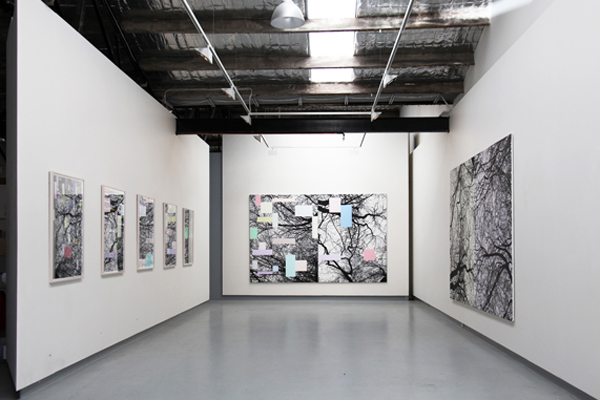
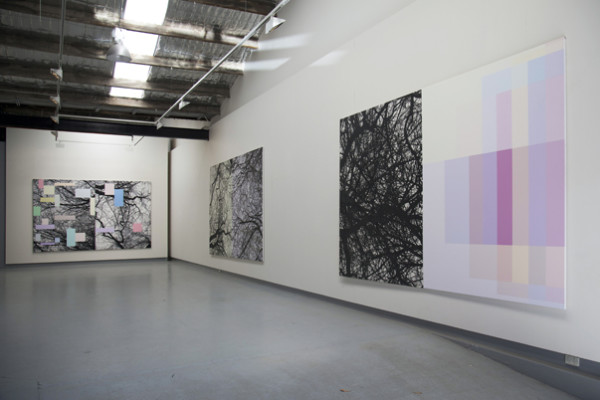
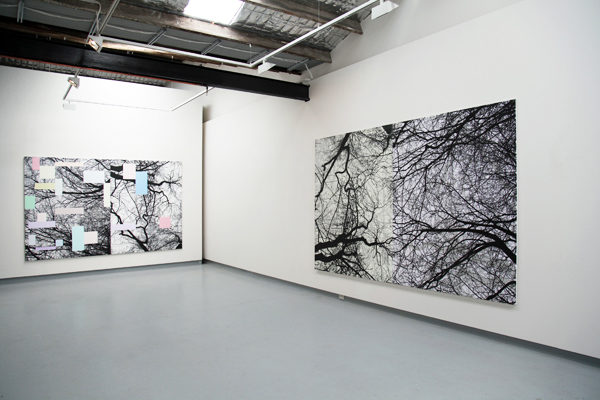
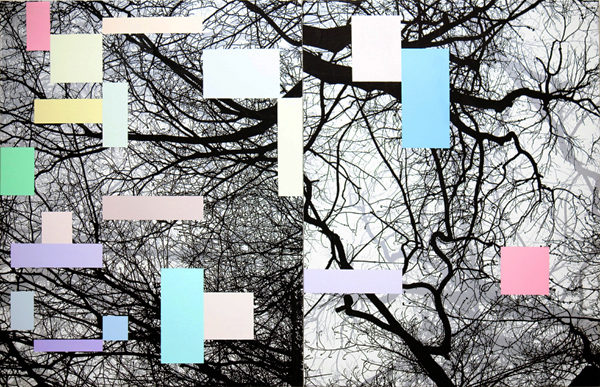
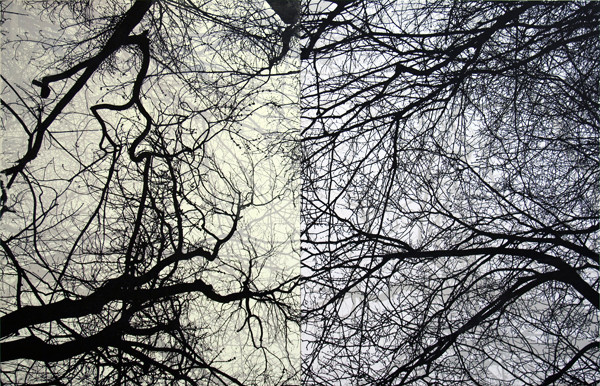

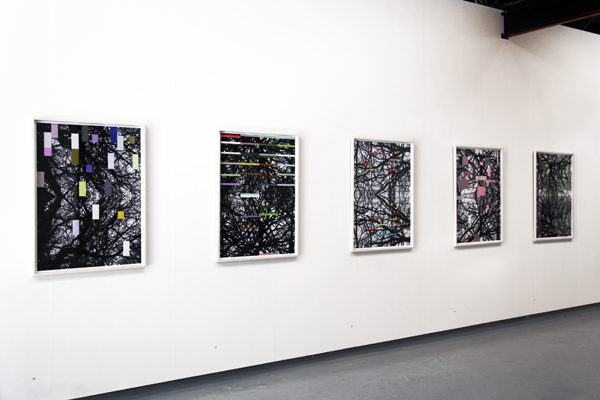
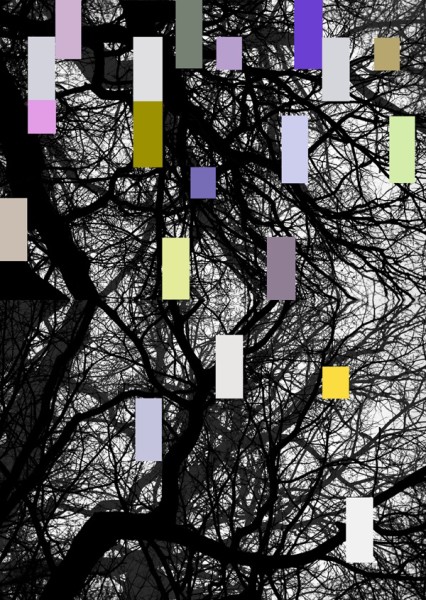
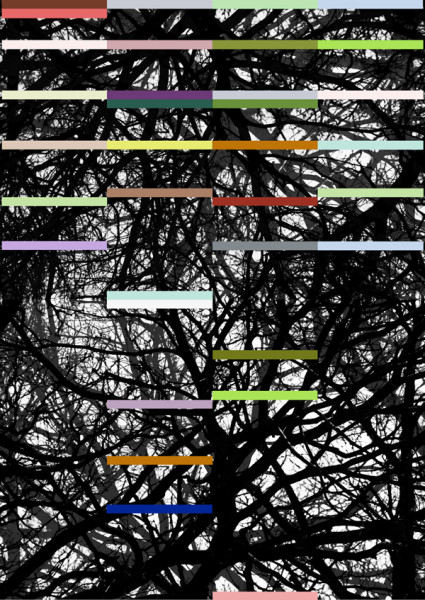
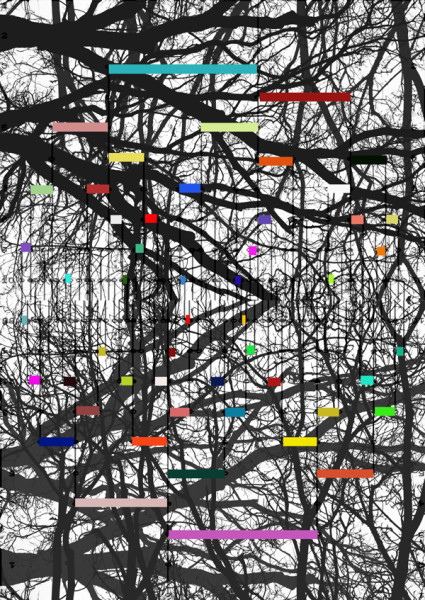
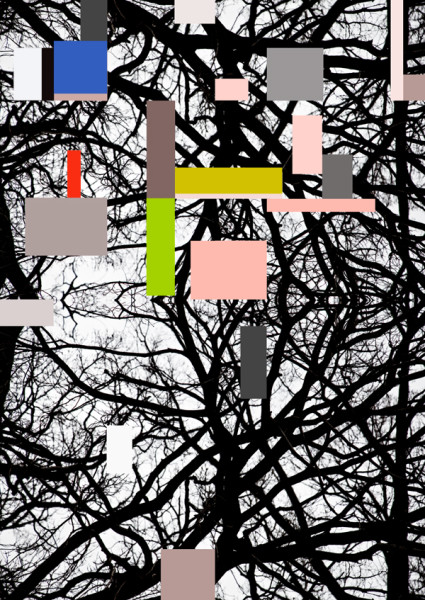
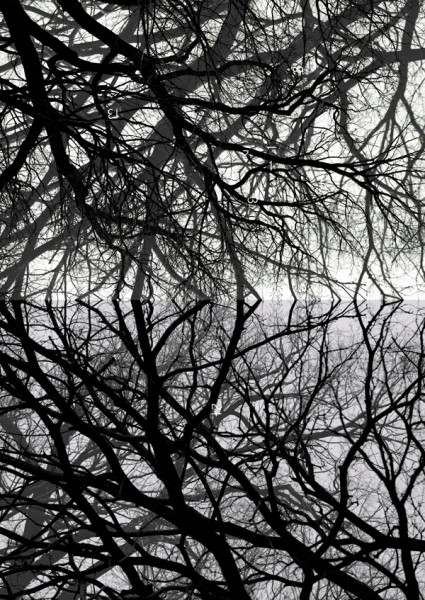
The Fibonacci Trees
“The affinities of all the beings of the same class have sometimes been represented by a great tree… As buds give rise by growth to fresh buds, and these if vigorous, branch out and overtop on all sides many a feebler branch, so by generation I believe it has been with the great Tree of Life, which fills with its dead and broken branches the crust of the earth, and covers the surface with its ever branching and beautiful ramifications.”
– Charles Darwin, 1859
The three paintings, The Fibonacci Trees, reflect on the large foyer mirrors in Sofitel’s reception space. The paintings are made for this place. The title refers to Fibonacci Trees, a mathematical way of representing abstract information; growth patterns and relationships. This is misleading, the paintings are not about these ‘binary trees’, nor mathematics. So it might be better to think of the two words of the title as separate – ‘Fibonacci’ and ‘Trees’. On the one hand, a rational way of understanding the structure of things in nature that escape rationality and on the other, pictures of nature that resemble, Pollock-like, all-over painting, a complex organism or a very complex and deformed grid – a screen for contemplation, with images reflected and for reflection. This brings to mind the image of the ‘Tree of Life’ found in the middle east and the sub-continent, and referred to by Charles Darwin, as a metaphor for the interconnectedness of all life and for common evolutionary descent.
The Fibonacci series, a mathematical sequence that appears throughout nature – in the branching of trees, the uncurling of ferns, the arrangement of a pine cone, the florets of a sunflower, the spirals of shells, the curling of waves, and so on – also has cultural applicability in spatial organisation, in music, in architecture, and in financial markets. It is identified with the Italian mathematician Leonardo Fibonacci (c. 1170 – c. 1250) who introduced Hindu – Arabic mathematics to Europe, gained from his study with leading Arab mathematicians. The series is, rather, a product of Indian mathematics, discovered by Rajasthani astronomer Brahmagupta (598-668) and later studied by Jain mathematician Acharya Hemachandra (1089-1172) some fifty years before Fibonacci popularised it in the West. This Indian interest is concerned with the relationship of mathematics to the physical world and this is a way to see these paintings. Their focus is on how abstraction can provide a parallel visual experience mediating the affects of the physical world.
RD
https://www.richarddunn.net/2012-by-leaves-we-live-4/